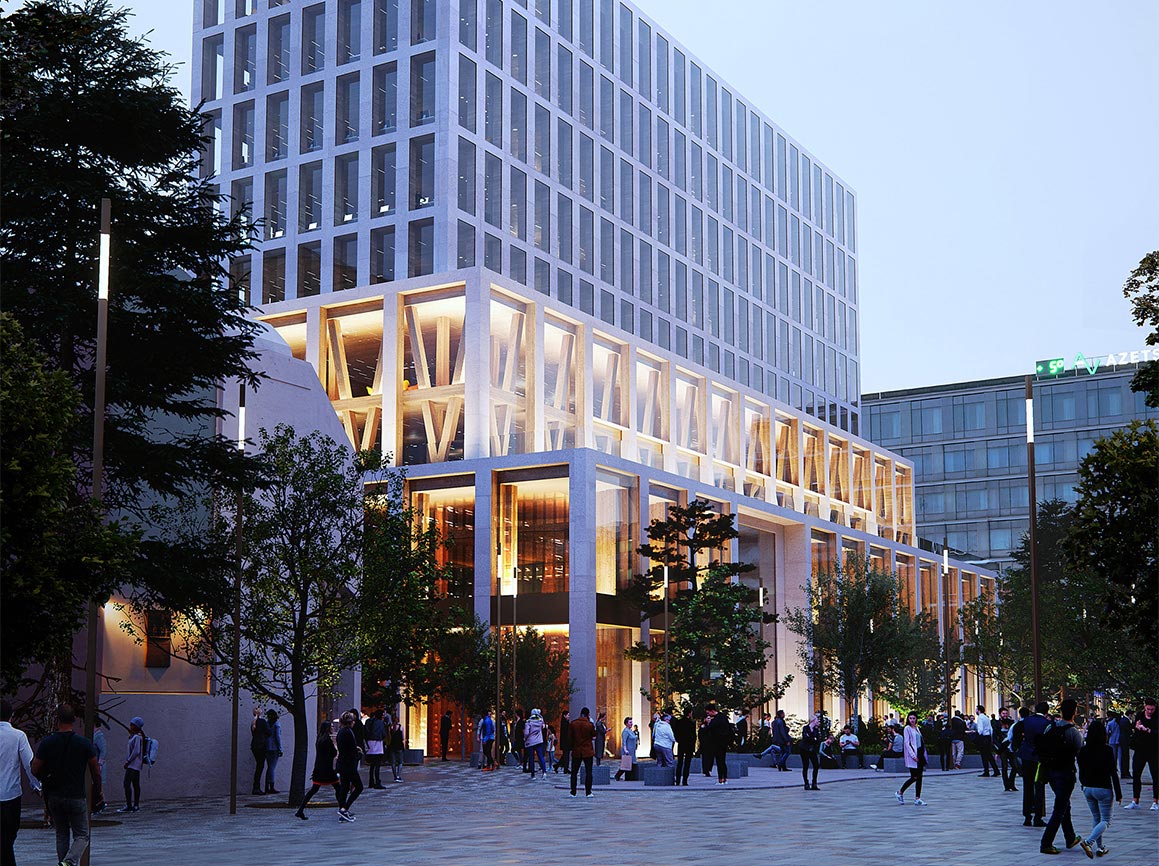‘Eliel’ does not diminish public space within the competition area, but makes more of it – it better organizes the existing spaces, and creates new, pleasant, safe and well-functioning space. It leaves open the western front of the station building creating a new and better Elielinakio and it improves the Asema-aukio as a hub for public transport giving it a distinct character as a central open space of the city. The plan shapes the whole area into a more walkable and bicycle friendly environment that also forms a seamless and effortless link and continuation from the walkable areas of the centre from Esplanadi-Keskuskatu to Kansalaistori and Töölönlahti area.
This proposal continues the dignified and exemplary architecture of public and corporate services of the surrounding Postitalo, Sokos and the buidings along Kaivokatu. In the context of the public and monumental spaces of the Railway station area, the new building does not aim to make a monumental or symbolic gesture, but compliments and accentuates the characteristics of its sur-roundings with its material choices – granite, glass, copper – as well as its roof heights and their alignments on the levels of Postitalo and the station’s west wing.
The architecture of the new building (11400 brm2) aims to be timeless and firm in a personal and attractive way. The building’s massive timber structure together with its technical, spatial and functional solutions support a long and flexible life cycle and offer a low-carbon solution that fol-lows the principles of circular economy. On ground level, aligned with the central entrance of the Railway station’s west wing, is a street-like open passage with retail space and connection to the below ground spaces of the city centre and the metro. Retail spaces are accessed directly from the street. The retail spaces are distinctly urban reflecting the spirit of urban passages, shopping streets and markets.
The series of open spaces will be interconnected with delicate variations of the pavements. Their tones reflect the colours and materials of the existing pavements and surrounding buildings, as well as the natural colours of typical Helsinki bedrock. Pedestrian streams and their variating intensities in different areas guide the treatment and scale of the paving stones that as a whole form a variable and lively overall appearance.
